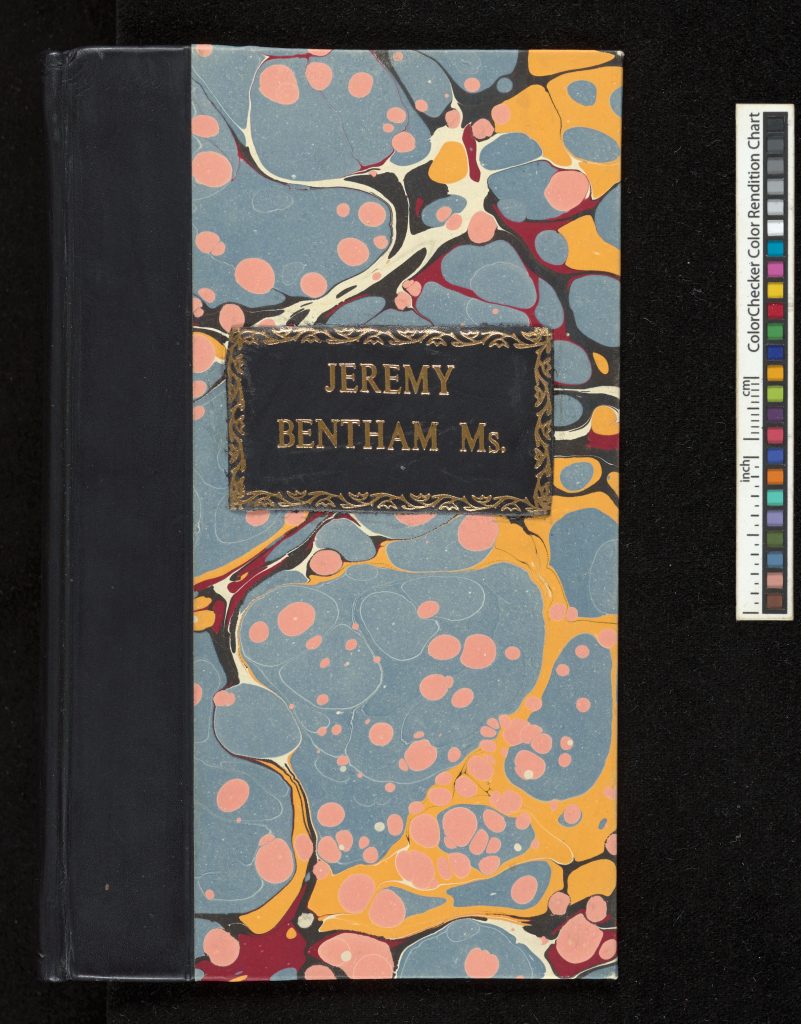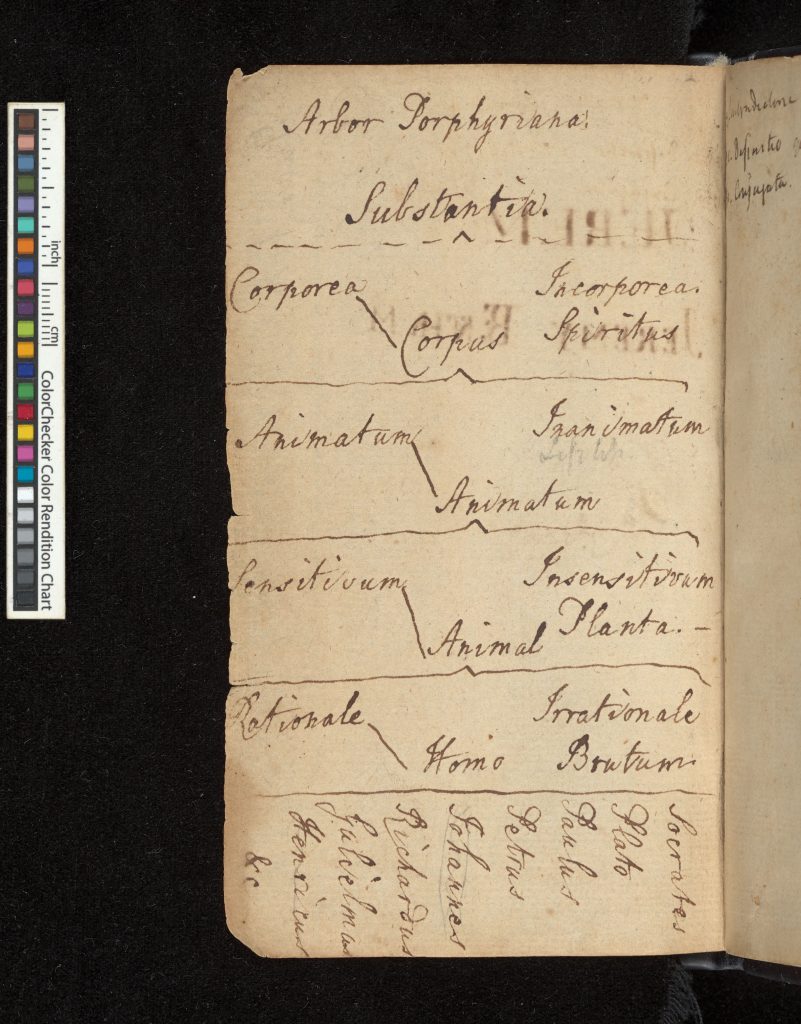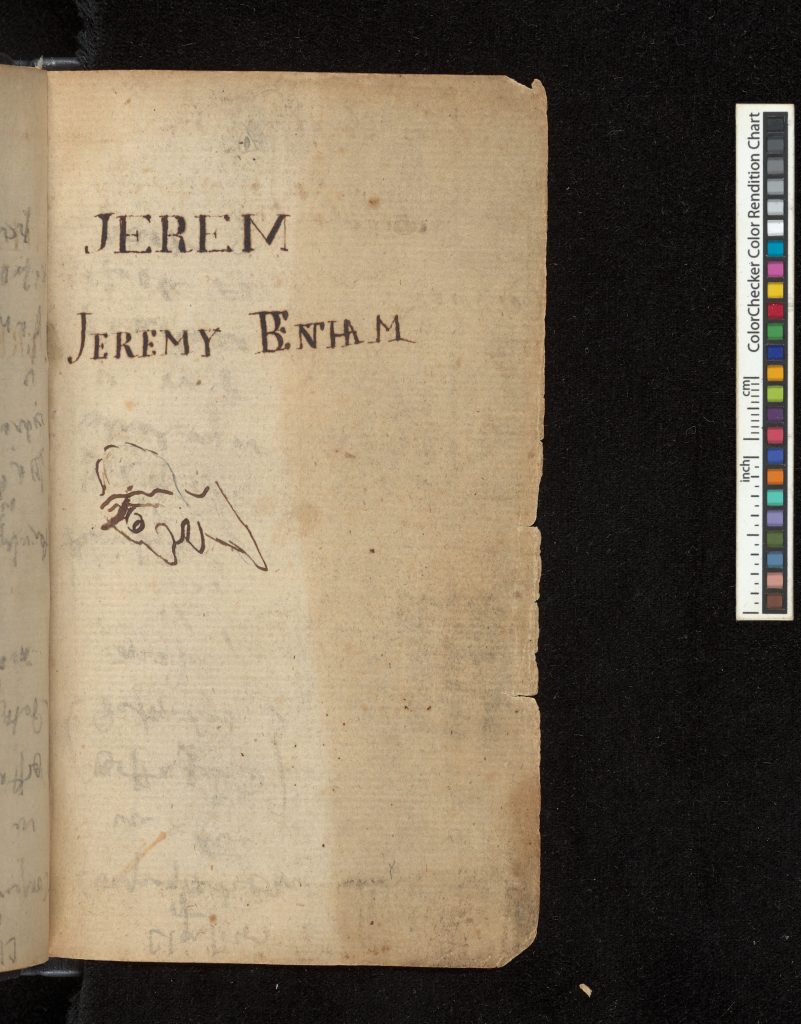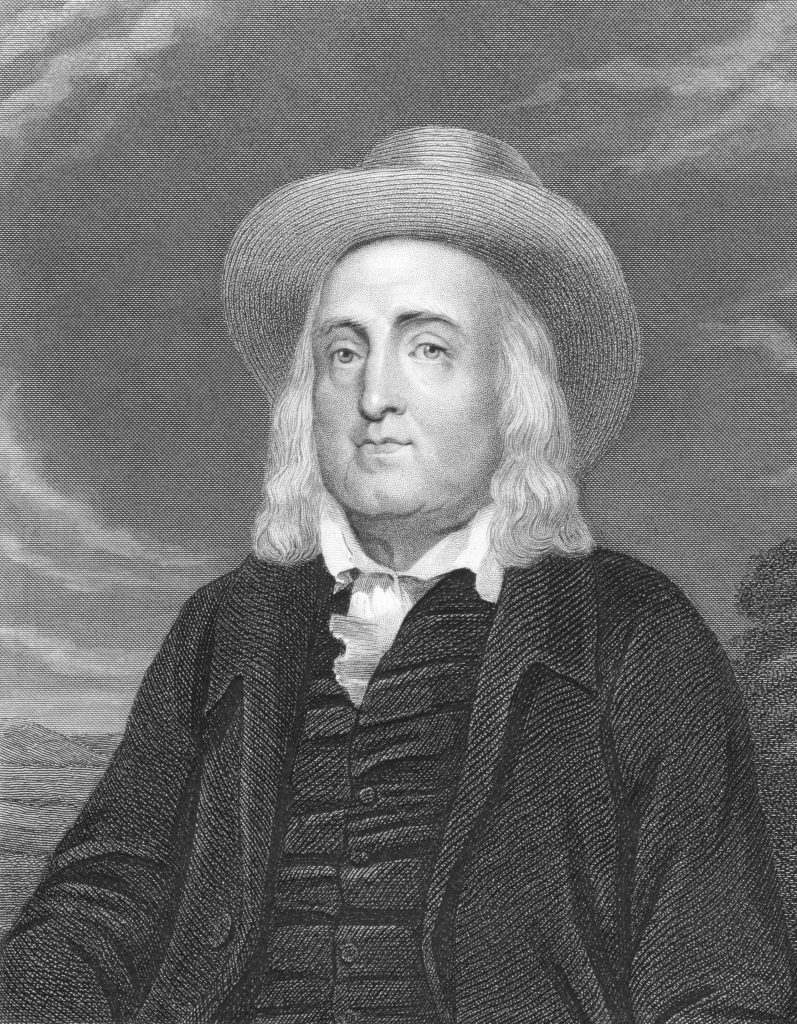After liaising with colleagues at UCL Special Collections , the College Library recently acquired a small, bound manuscript composed by Jeremy Bentham during his time as student at the College in the 1760s. Such records of student life are rare; the association with Bentham no doubt ensured its survival (the item was at one time owned by the cartoonist John Ryan, creator of Captain Pugwash). As such it not only provides a picture of life in College, containing sketches and caricatures of contemporary figures, but, as Dr Philip Schofield, General Editor of Bentham’s Collected Works, writes in this guest post, provides hints about his future thought. The manuscript has been digitised and will appear on the College’s section of Digital Bodleian in due course.
Professor Philip Schofield, UCL
Jeremy Bentham (1748–1832), the future utilitarian philosopher and reformer, was a mere 12 years old when he was entered at Queen’s College on 28 June 1760 and took up residence there in October 1760. It was not long before he had to move rooms because his gloomy chamber (despite being redecorated) overlooked a church-yard, which played on his fear of ghosts and brought on nightmares. He was placed under the tutorship of Jacob Jefferson (b. c. 1721, d. 1782), who, according to the memoir of Bentham prepared by his literary executor John Bowring, was ‘a morose and gloomy personage, sour and repulsive—a sort of Protestant monk’, whose ‘only anxiety about his pupil was, to prevent his having any amusement’. The only redeeming feature of Jefferson’s tutorship seems to have been the fact that he taught Bentham logic. The standard textbook of the time was the Logicæ artis compendium of Robert Sanderson (1587–1663), Regius Professor of Divinity at Oxford 1642–8, Bishop of Lincoln 1660–3, which had first been published in 1618. Bentham had the most recent edition of Saunderson (who he always referred to as Saunderson), which was that of 1741. It would remain the standard text-book at Oxford until the end of the eighteenth century.
The manuscript recently acquired by Queen’s College is clearly related to Bentham’s study of the logic of Sanderson. On the first page of the document, under Bentham’s name (in his hand), he has written ‘Conjugate p. 145’, which corresponds to Sanderson’s chapter De locis à Conjugatis & Notatione. The date ‘Febry 16 1761’ is also significant, in that it was the date that, according to a letter Bentham wrote to his father Jeremiah on the previous day, he was to begin his study of logic with four fellow students.

Bentham goes on to draw the Arbor Porphyriana or Porphyrian tree, derived from the Isagoge of Porphyry (234–c. 305), scholar and philosopher, which was read as an introduction to the Organon of Aristotle. Bentham reproduced the same diagram 50 years later in a table to Chrestomathia (published in 1817), his major work on education, though he did not there include the names of the individuals. Indeed, it was in the mid-1810s that Bentham wrote his most detailed work on logic, which he structured as a response to the Aristotelian tradition of logic that he had been taught at Oxford. Needless to say, Bentham’s conception of logic was radically different to Aristotle’s, but in a manuscript written in August 1814 he acknowledged his debt to his encounter with Sanderson’s Logicæ artis compendium: ‘Of the notions therein delivered, he [i.e. Bentham himself] found continually applicable, and applicable with advantage to ordinary practice. These treasured themselves up in his mind.’

As for the various caricatures in the document, one wonders whether they represent Bentham’s tutor Jacob Jefferson. There are a number of doodles in Bentham’s later manuscripts and so it is not surprising that, perhaps in moments of boredom, he should produce these sketches. That there were moments of boredom should also be no surprise. No doubt the young, brilliant Bentham, sped through Sanderson much more quickly than his classmates. But Jefferson was not, in Bentham’s view, the most inspiring of teachers. As Bowring’s memoir again informs us, ‘Bentham thought that his time was wasted without instruction. Jefferson gave or professed to give, what he called lectures on geography. This was one of his lectures—“Where is Constantinople?” and then he touched the part of the map, where Constantinople is, with a wand.’ Nevertheless, Bentham was prepared to admit to Bowring that ‘Jefferson gave him, out of Sanderson’s Logic, some materials for correct reasoning’.

Bentham eventually took his degree in 1764. He was reluctant to do so because it entailed subscribing to the Thirty-nine Articles of the Church of England. We still do not understand why the timid young boy who had entered Queen’s College in 1760 had become a religious sceptic by the time he was aged 16 and had to wrestle with his conscience in order to take his degree. Some part of that development, however, must plausibly be related to his study of logic, and this document takes us intriguingly right back to that formative period of the philosopher’s life.
Professor Philip Schofield is General Editor of the new authoritative edition of The Collected Works of Jeremy Bentham, being prepared by the Bentham Project, Faculty of Laws, University College London.
Bentham illustration: GeorgiosArt



